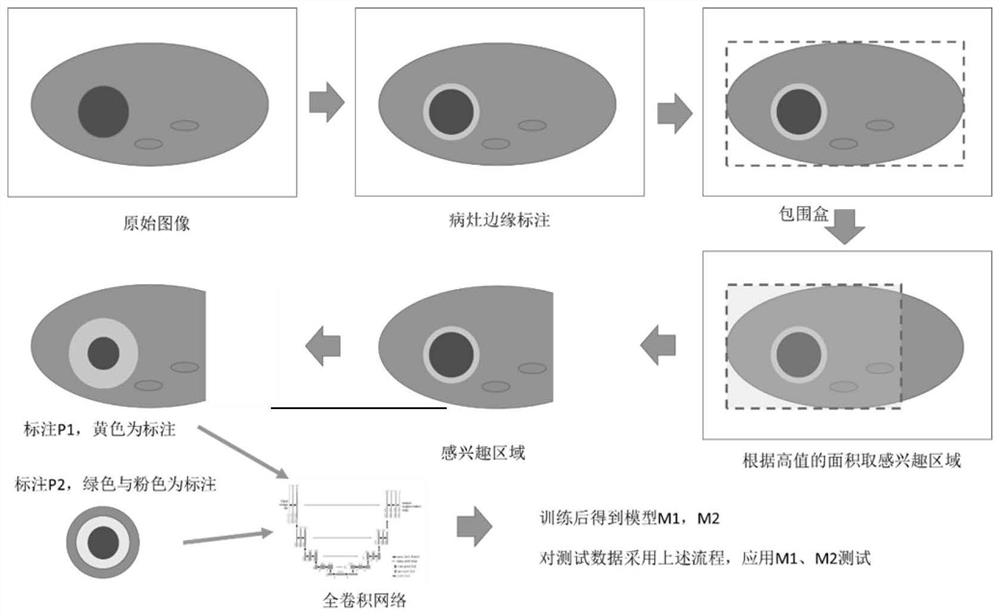Full-automatic detection and segmentation method and system for common bile duct cyst lesions in abdominal CT
A common bile duct, fully automatic technology, applied in the field of medical image processing, can solve problems such as no related research, and achieve the effect of reducing workload and operation time
- Summary
- Abstract
- Description
- Claims
- Application Information
AI Technical Summary
Problems solved by technology
Method used
Image
Examples
Embodiment 1
[0029] A method for automatic detection and segmentation of choledochal cyst lesions in abdominal CT, referring to figure 1 , the method includes the following steps:
[0030] Step 1, CT image preprocessing
[0031] 1-1. The doctor marks the edge of the choledochal cyst lesion on the CT source images of the training set to form a closed curve
[0032] 1-2. Perform preliminary processing on the CT source images of the training set and the labels marked by doctors:
[0033] Grayscale mapping: use the sampling window width and window level as the standard (window level: 40, window width: 250) to map the gray value of the data to 0-255.
[0034] Step 2, region of interest extraction
[0035] Since the location of the choledochal cyst is relatively fixed, generally located near the lower part of the liver, but the size of the lesion varies greatly from patient to patient, so we extracted a larger region of interest containing the lesion. Specific steps are as follows:
[0036]...
Embodiment 2
[0056] This embodiment also provides a fully automatic detection and segmentation system for choledochal cyst lesions in abdominal CT images, which uses the method described in Embodiment 1 to detect and segment choledochal cyst lesions in abdominal CT images.
[0057] This embodiment also provides a storage medium on which a computer program is stored, and the program is used to implement the method described in Embodiment 1 when executed.
[0058] This embodiment also provides a computer device, including a memory, a processor, and a computer program stored on the memory and operable on the processor. When the processor executes the computer program, the computer program described in Embodiment 1 is implemented. Methods.
PUM
 Login to View More
Login to View More Abstract
Description
Claims
Application Information
 Login to View More
Login to View More - R&D
- Intellectual Property
- Life Sciences
- Materials
- Tech Scout
- Unparalleled Data Quality
- Higher Quality Content
- 60% Fewer Hallucinations
Browse by: Latest US Patents, China's latest patents, Technical Efficacy Thesaurus, Application Domain, Technology Topic, Popular Technical Reports.
© 2025 PatSnap. All rights reserved.Legal|Privacy policy|Modern Slavery Act Transparency Statement|Sitemap|About US| Contact US: help@patsnap.com



